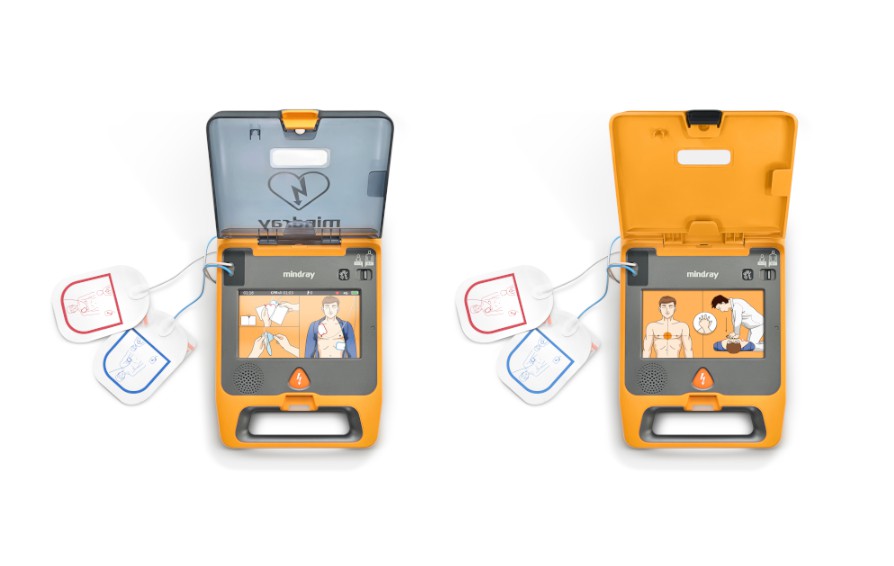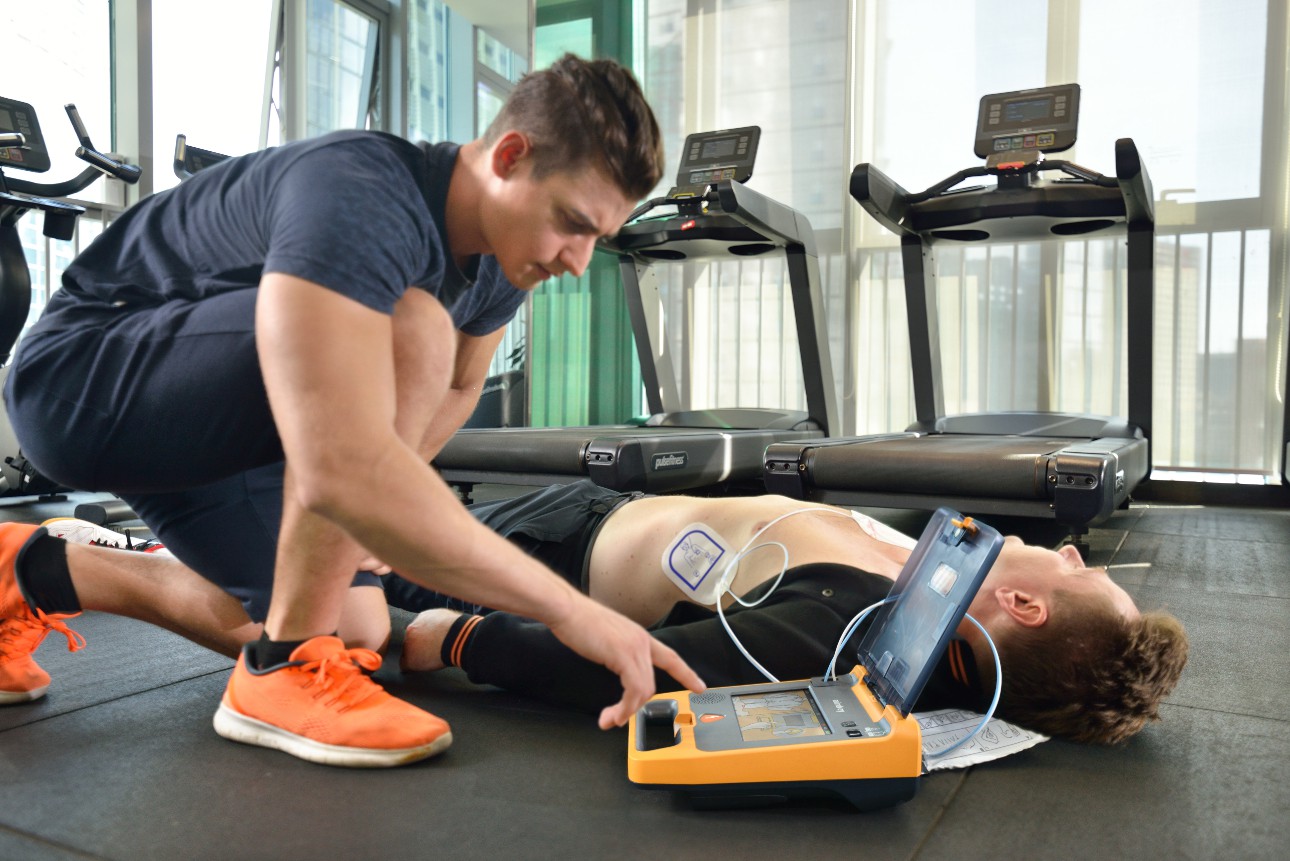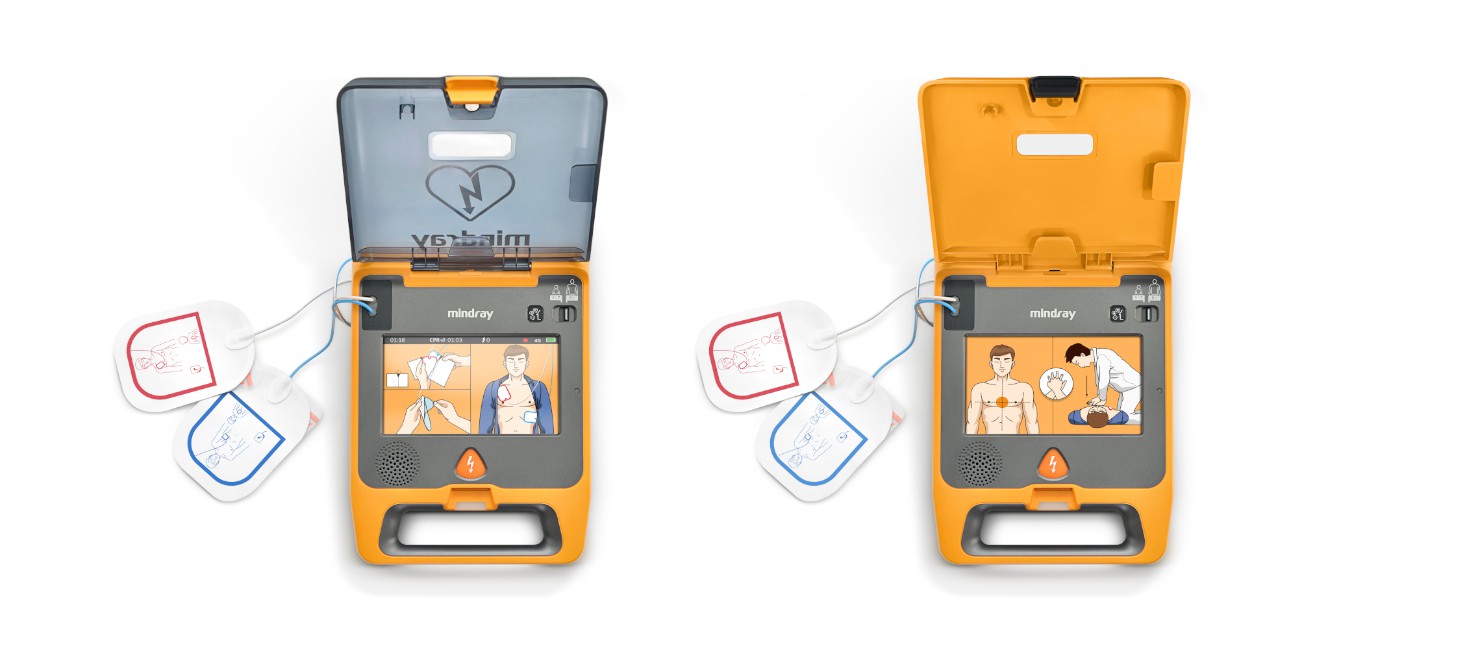How Many Joules Does A Biphasic AED Defibrillator Require?
Mindray 2021-12-06

According to AHA Journal and European Resuscitation Council Guidelines, Sudden Cardiac Arrest (SCA) is considered one of the principal considerations of death in various countries worldwide. [1][2] However, timely and effective defibrillation is proved to improve the survival rate of patients with SCA dramatically.[3] Defibrillation is a procedure used to treat life-threatening diseases that cause irregular heart rhythm, such as SCA. Analyzing the heart rhythm of SCA patients automatically and delivering high-energy AED shocks to the myocardium when necessary to depolarize and restore normal function of the heart is what we call defibrillation.
The most commonly used defibrillation device for out-of-hospital cardiac arrest (OHCA) is automatic external defibrillator (AED). AED, especially biphasic AED, has become the norm for emergency cardiac arrests. Biphasic AED, the improved one, is the preferred intervention for advanced cardiac life support.[4]

Sufficient current to the myocardium during the shock is what successful defibrillation requires though, the success rate is determined by energy. [4] The energy of a biphasic AED defibrillator is defined in joules. Joules is the unit of measurement associated with 1 Amp of current passing through 1 Ohm of resistance for 1 second. Thus, voltage (electric thrust), current (current), and duration (delivery time) are included in a biphasic AED defibrillation, and each plays a critical and different role in successful defibrillation. In a formula, the Joules that a biphasic AED delivers is expressed as Joules (Energy) = Time × Voltage × Current.
With the disadvantages of monophasic AED, the traditional defibrillator, gradually revealed, the advantages of biphasic AED defibrillator have been popularized. In terms of energy, a monophasic vs. biphasic defibrillation study has shown that biphasic waveform shocks of 200 joules or less are safe and have the same or higher efficacy as monophasic defibrillation of 360 joules or 200 joules. [5] Thereby, the energy range of conventional biphasic AEDs on the market generally ranging from 0 joules to 200 joules.
Although biphasic defibrillation performs more effectively and requires less energy than monophasic defibrillation, some studies argue that not all SCA patients can achieve successful defibrillation at the energy level of 200 joules because there is impedance in the human body. [4] If there is high impedance, the heart may fail to receive enough current to defibrillate successfully. Unfortunately, you are difficult to judge whether someone has high impedance only by observing someone.
However, it is reported that more current can be provided by increasing the optional energy (more joules) on the biphasic AED equipment to achieve successful defibrillation.[4] Considering the variable energy, when the first shock at 200 joule (default initial energy) fails, the energy level for the subsequent AED shocks can be either the same (200 joules) or as high as 360 joules, which is confirmed by American Heart Association.[4]
So, what clinical advantages can you gain from a biphasic AED that features the 360J biphasic technology?
The biphasic AED equipment that can reach 360 joules is obviously conducive to improve the success rate of the electric shock. More than half of the SCA patients need multiple electric shocks to restore the normal heart rhythm while in the previous treatments.[6] And for those who need multiple AED shocks, using an escalating higher biphasic energy regimen that can reach 360 J is proved to improve the survival rate by a controlled trial led by Ian G. Stiell, Robert G. Walker, Lisa P. Nesbitt, and other experts. [6] It also showed that when the energy increased to 360 joules, the rate of ventricular fibrillation termination and conversion to organized rhythm was significantly higher than maintaining the same first shock dose in SCA patients requiring multiple shocks. [6]
More than that, a wider population of SCA patients can be covered with the use of biphasic AEDs up to 360 joules.[7] As mentioned earlier, for people with high body impedance, such as athletes, the elderly, obesity, etc., it is difficult for the heart to receive enough current to successfully defibrillate when using AED equipment with a maximum of only 200 joules. Therefore, a biphasic AED equipment that can reach 360 joules is a powerful life safety guarantee for high impedance people.
Biphasic AED with delivered joule up to 360 joules is recommended by AHA[4][6]; nevertheless, the current biphasic AED equipment on the market mainly has a maximum energy of 200 joules, and few AED brands master 360J biphasic technology. Mindray, one of the leaders in the field of AED research, has overcome the relevant technical barriers and developed the industry-leading BeneHeart C series AEDs that features maximum 360J biphasic technology. By setting the optional ascending electric shock energy, Mindray AED is available to meet the SCA population with different body impedance so as to improve the success rate of the first defibrillation effectively.

The biphasic AED should not only provide high-energy AED shock to achieve a successful defibrillation but also feature fast charge time because the rescue time of SCA patients is so important that the authority recommends that the first electric shock should be within 3-5 minutes after SCA patients fall. [3]Mindray AED adopts QshockTM technology to shorten the ECG analysis time to only 5 seconds with pre-charging completed synchronously and delivers the first AED shock in 8 seconds, which is considered a leading position in the industry. The AED equipment with such advanced technologies is developed to care for people with a high rate of SCA around you. If you are considering a biphasic AED that can provide higher joules, Mindray AED could be your preference.
References:
[1] Heart Disease and Stroke Statistics—2020 Update: A Report From the American Heart Association. AHA Journal, Volume 141, Issue 9, January 2020, Pages 139–596. Available at: https://www.ahajournals.org/doi/10.1161/CIR.0000000000000757 (Accessed: 9 October 2021)
[2] European Resuscitation Council Guidelines 2021: Epidemiology of cardiac arrest in Europe. Resuscitation. Volume 161, February 2021, Pages 61–79. Available at: https://cprguidelines.eu/assets/guidelines/European-Resuscitation-Council-Guidelines-2021-Ep.pdf (Accessed: 9 October 2021)
[3] Consensus document regarding cardiovascular safety at sports arenas: Position stand from the European Association of Cardiovascular Prevention and Rehabilitation (EACPR), section of Sports Cardiology. European Heart Journal, Volume 32, Issue 17, September 2011, Pages 2119–2124. Available at: https://doi.org/10.1093/eurheartj/ehr178 (Accessed: 9 October 2021)
[4] Part 6: Advanced Cardiovascular Life Support
Section 2: Defibrillation. AHA Journal, Volume 102, No.suppl_1, August 2000, Pages 90–94. Available at: https://www.ahajournals.org/doi/10.1161/circ.102.suppl_1.I-90 (Accessed: 9 October 2021)
[5] Demystifying biphasic defibrillation. Nursing2005, Volume 35, Issue 8, August 2005, Pages 6-11. Available at: https://journals.lww.com/nursing/Fulltext/2005/08001/Demystifying_biphasic_defibrillation.2.aspx (Accessed: 9 October 2021)
[6] BIPHASIC Trial. A Randomized Comparison of Fixed Lower Versus Escalating Higher Energy Levels for Defibrillation in Out-of-Hospital Cardiac Arrest. AHA Journal, Volume 115, No. 12, March 2007, Pages 1511–1517. Available at: https://www.ahajournals.org/doi/full/10.1161/circulationaha.106.648204 (Accessed: 9 October 2021)
[7] Part 5: Electrical Therapies. Automated External Defibrillators, Defibrillation, Cardioversion, and Pacing. AHA Journal, Volume 112, Issue 24_supplement, December 2005, IV-35–IV-46. Available at: https://www.ahajournals.org/doi/10.1161/CIRCULATIONAHA.105.166554 (Accessed: 9 November 2021)